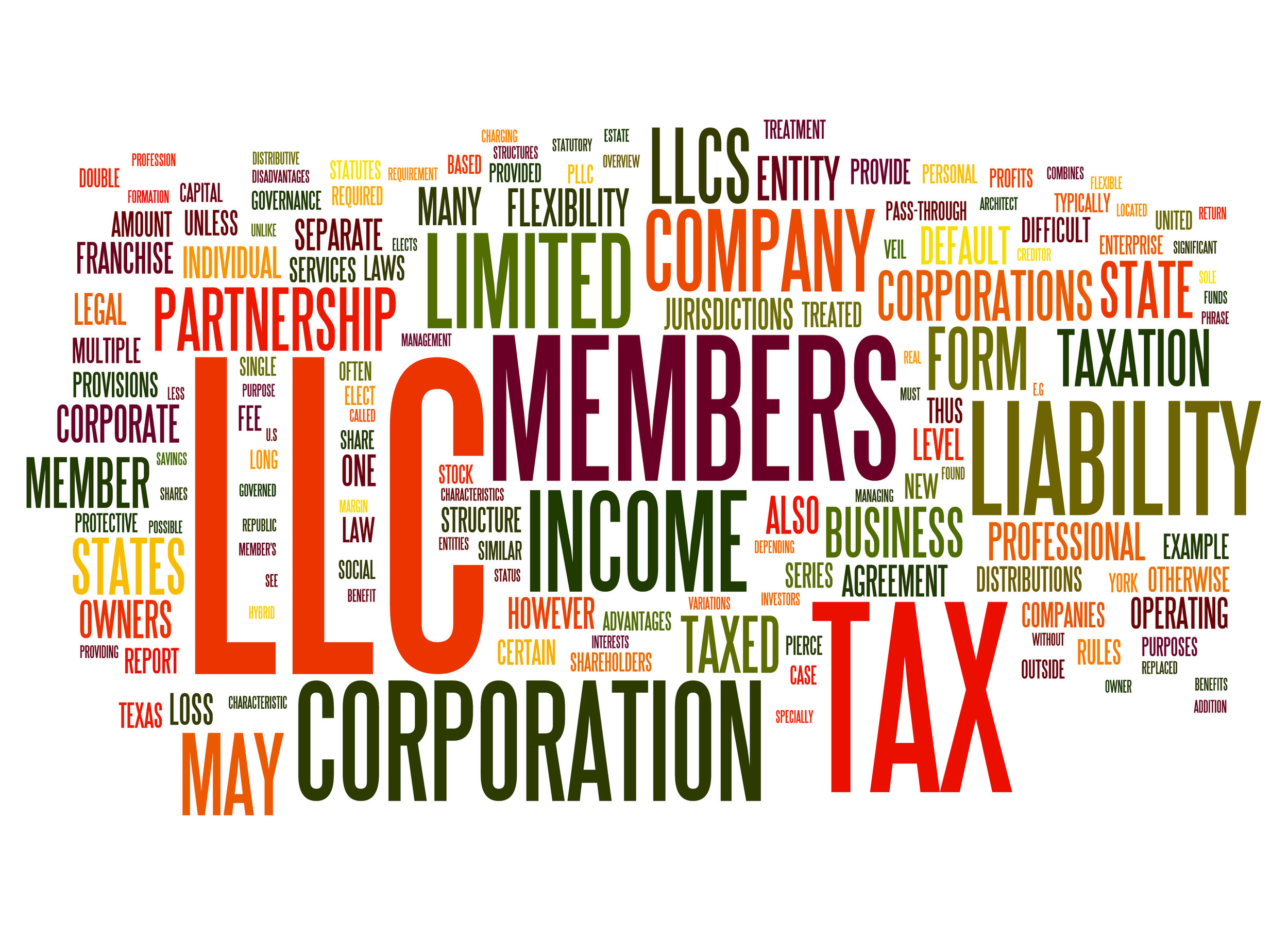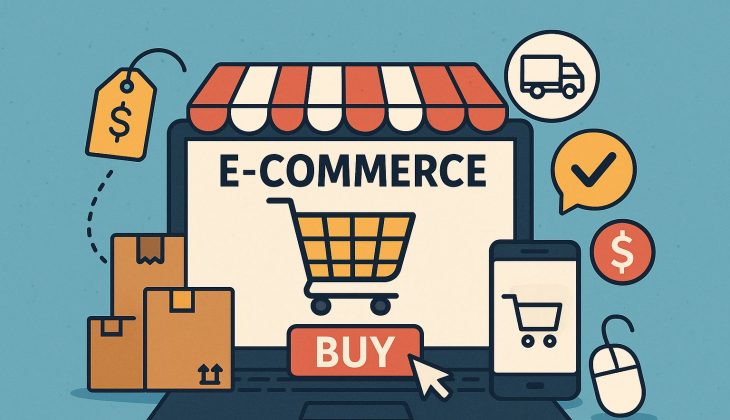Key Takeaways
- Starting an e-commerce business requires identifying a profitable product niche, setting up the right legal structure, and choosing an appropriate platform like Shopify that aligns with your specific business needs.
- Validating product demand before investing heavily saves thousands in potential losses – use tools like Google Trends, social media polling, and small test campaigns to gauge interest.
- New e-commerce entrepreneurs can launch with minimal upfront investment through dropshipping, though inventory-based models offer higher profit margins and better quality control.
- Mobile optimization is non-negotiable with over 70% of e-commerce traffic coming from smartphones – your store must load quickly and function seamlessly across all devices.
- The most successful e-commerce businesses focus on customer retention strategies from day one, as increasing customer retention by just 5% can boost profits by 25-95%.

“Ecommerce Agency: How to choose the …” from codedesign.org and used with no modifications.
The e-commerce industry continues to experience explosive growth, with global sales projected to reach $7.4 trillion by 2025. There’s never been a better time to start your online business. Whether you’re looking to replace your 9-to-5 job or create additional income streams, this comprehensive guide will walk you through everything you need to know to launch a successful e-commerce venture.
Finding Your Product Niche

“Product Images for eCommerce Websites” from graphicdesigneye.com and used with no modifications.
The foundation of any successful e-commerce business begins with selecting the right product niche. Your niche determines not only what you’ll sell but also who you’ll market to and how you’ll position your brand. The most profitable niches typically solve specific problems for clearly defined customer segments rather than trying to appeal to everyone.
When exploring potential niches, look for the sweet spot between your personal interests, market demand, and profit potential. A product you’re passionate about will make the inevitable challenges of entrepreneurship more bearable. Using tools like Google Trends, Amazon Best Sellers, and social media listening can reveal emerging opportunities with growing demand but manageable competition.
- Evaluate your interests, skills, and experiences that could translate into product expertise
- Research market trends and identify gaps in existing offerings
- Analyze competition to find untapped opportunities or ways to differentiate
- Consider profit margins, shipping logistics, and seasonal fluctuations
- Test your ideas with potential customers before committing significant resources
Setting Up a Legal Business Structure

“Legal Form for Your Business …” from trippwatson.com and used with no modifications.
Before launching your online store, establishing the right legal foundation protects both your personal assets and business interests. The most common business structures for e-commerce ventures include sole proprietorships, LLCs, and corporations, each with distinct tax implications and liability protections. For most new e-commerce entrepreneurs, a Limited Liability Company (LLC) offers the ideal balance of simplicity, tax flexibility, and personal asset protection.
Beyond choosing a business structure, you’ll need to secure necessary permits and licenses. Requirements vary by location, product type, and business model, so research your specific obligations carefully. At minimum, most e-commerce businesses need a business license, seller’s permit, and Employer Identification Number (EIN) from the IRS. If you’re selling specialized products like food, cosmetics, or electronics, additional regulatory compliance may be necessary.
Selecting the Right E-commerce Platform

“5 Best free e-commerce platforms that …” from fireapps.io and used with no modifications.
Your e-commerce platform serves as the technological foundation of your online business, so choosing the right one is crucial. The ideal platform balances ease of use, scalability, features, and cost. For beginners, user-friendly platforms like Shopify offer comprehensive solutions with minimal technical knowledge required. These all-in-one platforms handle everything from website hosting to payment processing, letting you focus on building your business rather than managing technology.
When evaluating platforms, consider both your current needs and future growth plans. Look for solutions offering responsive design templates, secure payment processing, inventory management, and marketing tools. Integration capabilities with other business systems (email marketing, accounting, shipping) will become increasingly important as your business grows. While budget is always a consideration, the cheapest option rarely delivers the best long-term value for a serious e-commerce venture.
Choose Products That Actually Sell Online
Product selection can make or break your e-commerce business before it even begins. The most successful online stores don’t just sell random products—they curate offerings that meet specific criteria for online sales success. Understanding what makes certain products thrive in digital environments while others struggle will dramatically improve your chances of building a profitable business.
Best Product Categories for New E-commerce Entrepreneurs
Certain product categories consistently perform well for new online sellers due to their favorable characteristics for e-commerce. Items that are lightweight, durable, non-perishable, and have universal appeal typically offer the best starting point. These products minimize shipping challenges while maximizing your potential customer base.
For more insights, check out this guide on affiliate marketing tips to enhance your e-commerce strategy.
Mobile-Friendly Design Elements That Convert
With over 70% of e-commerce traffic now coming from mobile devices, optimizing your store for smartphone users isn’t optional—it’s essential. Mobile optimization starts with responsive design that automatically adjusts your layout to fit any screen size, but true mobile-friendliness goes much deeper than that.
The most effective mobile e-commerce designs feature large, easily tappable buttons (minimum 44×44 pixels), simplified navigation menus, and thumb-friendly layouts that place key elements within reach of one-handed browsing. Page speed is particularly critical on mobile, where even a one-second delay can reduce conversions by up to 20%. Compress images, minimize code, and leverage browser caching to keep load times under two seconds.
Product images deserve special attention in mobile design. Implement swipe gestures for product galleries and ensure zoom functionality works smoothly on touchscreens. Remember that mobile shoppers often browse in distracting environments, so clear product information and simplified checkout processes significantly impact conversion rates.
Mobile Optimization Checklist
✓ Responsive design that adapts to all screen sizes
✓ Page load time under 2 seconds
✓ Large, easily tappable buttons and form fields
✓ Simplified navigation and checkout process
✓ Touch-friendly product galleries
✓ Visible search functionality
✓ No pop-ups that obstruct contentFor more insights on launching an online store, check out Shopify’s ecommerce business blueprint.
Testing your mobile experience on actual devices rather than just simulators reveals real-world usability issues that might otherwise go unnoticed. Pay particular attention to your checkout flow, as this is where most mobile conversion issues occur. Offering mobile-friendly payment options like Apple Pay, Google Pay, and Shop Pay can increase conversion rates by up to 35% by eliminating the need to enter credit card details on small screens.
Setting Up Secure Payment Processing
Payment processing forms the critical final link in your e-commerce sales funnel. Today’s customers expect seamless checkout experiences with multiple payment options and bulletproof security. Start by selecting a payment processor that balances reasonable fees with robust features. Popular options like Stripe, PayPal, and Square offer straightforward integration with most e-commerce platforms while handling security compliance. Display security badges prominently during checkout, implement SSL encryption across your entire site (not just checkout pages), and consider adding fraud detection tools as your business grows to build customer confidence in your payment system.
Create a Smart Shipping Strategy

“10 smart shipping strategies” from www.thefabricator.com and used with no modifications.
Shipping represents one of the most complex operational challenges for new e-commerce businesses. Get it wrong, and excessive costs eat your profits or high shipping prices drive away customers. Get it right, and you’ve created a competitive advantage that builds customer loyalty and protects margins.
For more insights on building a successful online business, check out this guide to AI tools for small businesses.
The foundation of an effective shipping strategy is understanding your true fulfillment costs, including packaging materials, labor, warehouse space, and carrier rates. Many new store owners undercharge for shipping by focusing solely on carrier rates while overlooking these additional expenses. Shipping strategy should align with your overall business positioning—free shipping may be essential for competitive markets, while premium shipping options might better suit luxury products.
Affordable Shipping Options for Small Businesses
Small e-commerce businesses can access surprisingly competitive shipping rates despite lacking the volume discounts of larger retailers. USPS remains the most cost-effective option for lightweight packages under 2 pounds, with Priority Mail offering flat-rate options that simplify shipping costs for heavier items. Shipping platforms like Shippo, Pirate Ship, and ShipStation provide discounted commercial rates (often 20-40% off retail prices) without requiring minimum volumes. Regional carriers sometimes offer better rates for deliveries within specific geographic areas, making them worth investigating if your customer base clusters in certain regions. As your business grows, negotiated rates with major carriers become possible once you’re shipping 100+ packages weekly.
How to Calculate Shipping Costs
Accurate shipping cost calculation prevents profit-killing surprises that turn seemingly successful orders into money-losing transactions. Start by weighing and measuring every product in your inventory, including packaging, to determine dimensional weight (which carriers use for larger, lightweight items). Implement real-time carrier rate calculations at checkout whenever possible, rather than flat-rate shipping that inevitably undercharges some customers while overcharging others. If your platform supports it, create shipping rules based on order value, weight, and destination to automatically apply the most appropriate shipping method. For international shipping, factor in not just increased carrier costs but also customs documentation requirements, potential duties, and longer delivery timeframes that impact customer satisfaction.
Packaging Solutions That Save Money
Strategic packaging choices can significantly reduce shipping costs while enhancing the unboxing experience. Poly mailers offer substantial savings over boxes for soft, durable items, weighing less and taking up minimal space in delivery vehicles. For items requiring rigid protection, source right-sized boxes rather than using oversized packaging that incurs dimensional weight surcharges. Consider packaging materials carefully—air pillows and kraft paper provide excellent protection with minimal weight addition, while custom-printed tissue paper creates a premium unboxing experience for just pennies per order. Bulk purchasing packaging supplies directly from manufacturers rather than retail sources typically saves 30-50% once you reach modest volume levels.
Drive Traffic to Your New E-commerce Store

“Drive Traffic to Your E-Commerce Store …” from www.vidjet.com and used with no modifications.
Even the most beautifully designed store with perfect products will fail without a steady flow of targeted traffic. New e-commerce businesses must develop a multi-channel traffic strategy that balances immediate results with long-term sustainable growth. Avoid the common mistake of spreading your marketing efforts too thin—instead, master one or two channels before expanding. Your initial traffic mix should typically include both organic methods (content marketing, SEO, social media) and paid approaches (targeted ads on platforms where your ideal customers already spend time).
Social Media Marketing for New Online Stores
Effective social media marketing for e-commerce focuses on platform selection based on where your target customers actually spend their time rather than trying to maintain a presence everywhere. Visual platforms like Instagram and Pinterest typically deliver the strongest results for product-based businesses, with conversion rates up to 3x higher than text-heavy networks. Rather than purely promotional content, follow the 80/20 rule: 80% valuable, entertaining, or educational content related to your product category, and only 20% direct sales messages. User-generated content showing real customers using your products creates authentic social proof while reducing your content creation burden. Consistency matters more than frequency—a regular posting schedule of 3-4 quality posts weekly typically outperforms sporadic high-volume posting.
For those looking to enhance their strategy, this affiliate marketing guide offers additional insights.
SEO Basics for E-commerce Beginners
E-commerce SEO starts with solid technical fundamentals: proper site structure, clean URLs, fast loading pages, and mobile optimization. Product pages should target specific long-tail keywords that match actual search queries, with unique product descriptions rather than manufacturer-provided content. Include key product specifications, dimensions, materials, and use cases using natural language that addresses common customer questions. Internal linking between related products and relevant category pages helps search engines understand your site structure while encouraging visitors to explore more of your catalog. While SEO takes time to deliver results (typically 3-6 months for new stores), building these foundations from day one creates sustainable traffic that doesn’t disappear when ad spending stops.
Email Marketing Automation That Sells
Email marketing consistently delivers the highest ROI of any digital channel for e-commerce, averaging $42 for every $1 spent. The key to this effectiveness lies in building a quality list and implementing strategic automation sequences that deliver the right message at the right time. Begin collecting email addresses before your store even launches with a coming-soon page offering a discount or exclusive access in exchange for signup.
Focus on creating automated email sequences for critical customer touchpoints: welcome series for new subscribers, abandoned cart recovery, post-purchase follow-ups, and win-back campaigns for inactive customers. Personalization significantly improves performance—emails with personalized subject lines are 26% more likely to be opened, while segmented campaigns drive 760% higher revenue than one-size-fits-all broadcasts. Keep design mobile-friendly with single-column layouts, large buttons, and concise copy that gets to the point quickly.
Creating Content That Attracts Customers
Content marketing for e-commerce extends beyond product descriptions to create valuable resources that attract potential customers early in their buying journey. Successful content strategies focus on addressing customer questions and problems rather than overtly selling products. Create buying guides that help customers understand product features, comparison articles that position your offerings against alternatives, and how-to content that demonstrates product usage and benefits.
Video content deserves special attention, with 73% of consumers more likely to purchase after watching videos explaining products or services. Simple smartphone-shot product demonstrations, behind-the-scenes content, and customer testimonials often outperform highly produced content in both engagement and conversion. For maximum impact, repurpose content across multiple channels—turn blog posts into social graphics, videos into podcast episodes, and customer reviews into social proof elements throughout your site.
Paid Advertising on a Startup Budget
Effective paid advertising for new e-commerce stores requires surgical precision rather than broad campaigns. Start with small, highly targeted campaigns using Facebook/Instagram and Google Shopping ads, focusing on your most profitable products and clearest customer demographics. Set strict daily budgets of $10-20 to begin, and optimize based on data rather than assumptions. Retargeting campaigns typically offer the highest initial ROI for new stores, with conversion rates 10x higher than cold traffic. As you gather customer data, lookalike audiences based on your best customers allow for cost-effective scaling without sacrificing targeting precision. Track performance meticulously using UTM parameters and conversion pixels to ensure your customer acquisition cost remains well below your customer lifetime value.
Turn Visitors Into Buyers With These Conversion Tactics
Driving traffic to your store is only half the battle—converting those visitors into paying customers is where many new e-commerce businesses struggle. The average conversion rate for e-commerce sites hovers around 2-3%, but strategic optimization can double or triple this figure. Focus first on creating instant credibility through professional design, clear navigation, and prominent trust signals like security badges, reviews, and guarantees. Then implement proven conversion boosters: urgency elements (limited-time offers, low-stock indicators), social proof (customer reviews, testimonials, user photos), and objection-handling content that preemptively addresses common concerns. Remember that conversion optimization is an ongoing process, not a one-time fix—implement A/B testing to continuously refine your approach based on actual customer behavior.
Product Descriptions That Sell
Product descriptions are far more than just technical specifications—they’re your virtual salespeople working 24/7. Effective product descriptions address both logical and emotional buying triggers by highlighting benefits alongside features. Instead of simply listing what a product is, explain how it solves problems or improves the customer’s life. Use sensory language that helps shoppers imagine owning and using your product, and write in a tone that matches your brand personality while speaking directly to your ideal customer.
For more insights, check out this guide on AI tools for small businesses to enhance your marketing strategies.
High-Quality Product Images on a Budget
Professional product photography doesn’t require expensive equipment. With a smartphone, a $30 lightbox, and natural lighting, you can create studio-quality images that showcase your products effectively. Focus on consistency across your product catalog with clean, white backgrounds for main product images, followed by lifestyle shots showing the product in use. Including multiple angles, close-ups of important details, and scale references helps customers understand exactly what they’re buying.
Video content dramatically increases conversion rates, with product pages featuring videos converting up to 80% better than those without. Even simple 360-degree product rotations or brief demonstration clips shot with a smartphone on a tripod can significantly reduce return rates by setting accurate expectations about product size, functionality, and appearance.
Trust Signals That Boost Sales
Building trust with first-time visitors is essential for converting browsers into buyers. Strategically place trust signals throughout your site, including secure payment icons, money-back guarantees, authentic customer reviews, and detailed shipping/return policies. Displaying real customer photos alongside reviews creates powerful social proof, while trust badges from recognized organizations like the Better Business Bureau or industry associations lend credibility to new stores. Be transparent about potential negatives like shipping times or restocking fees—this honesty builds more trust than hiding potential friction points that customers will discover later.
Scale Your E-commerce Business Beyond the First $10,000

“Scaling Your E-commerce Business …” from razorpay.com and used with no modifications.
Reaching your first $10,000 in sales represents a significant milestone, but scaling beyond this point requires strategic shifts in your business approach. Most e-commerce businesses hit growth plateaus that can only be overcome by improving systems rather than simply working harder. The path to sustainable growth involves gradually replacing yourself in day-to-day operations while focusing on strategic initiatives that drive exponential rather than incremental growth.
Data becomes increasingly valuable as you scale, informing decisions from inventory planning to marketing spend. Implement analytics tools that track not just sales data but also customer lifetime value, acquisition costs by channel, and product performance metrics. This information allows you to double down on what’s working while quickly pivoting away from underperforming strategies before they drain resources.
As your order volume increases, consider strategic outsourcing for time-intensive tasks like order fulfillment, customer service, and content creation. Third-party logistics providers (3PLs) can often handle warehousing and shipping more efficiently than in-house operations once you exceed 10-20 daily orders, freeing you to focus on growth-oriented activities rather than packing boxes.
Customer Retention Strategies That Work
Acquiring a new customer costs five to seven times more than retaining an existing one, making customer retention the most profitable growth strategy for established e-commerce businesses. Implement a structured retention program including post-purchase email sequences, loyalty rewards, and personalized recommendations based on previous purchases. The most effective retention programs begin the moment a customer completes their first purchase with thoughtful order confirmations, engaging unboxing experiences, and proactive customer service.
Subscription models represent the ultimate retention strategy, converting one-time buyers into predictable recurring revenue. Even businesses selling products not traditionally offered as subscriptions can create “replenishment” models, curated boxes, or VIP membership programs that generate recurring revenue while increasing customer lifetime value. Start by identifying products customers naturally reorder, then create subscription options with incentives like discounts, free shipping, or exclusive products not available to one-time purchasers. For more insights on increasing customer engagement, explore these ChatGPT prompts for marketers.
Community building transforms customers from transactional buyers into brand advocates. Private Facebook groups, virtual events, user-generated content campaigns, and in-person meetups foster connections between customers who share interests related to your products. These communities create powerful barriers to competition, as customers become emotionally invested in both your brand and their relationships within your brand ecosystem.
When to Expand Your Product Line
Product expansion represents both opportunity and risk for growing e-commerce businesses. Expand too soon, and you’ll dilute your focus and inventory investment; wait too long, and you limit your growth potential. The ideal timing for expansion comes when you’ve maximized the sales potential of your core products through optimized listings, dialed-in marketing, and strong repeat purchase rates.
Follow a structured approach to product expansion rather than simply adding items that appeal to you personally. Start by analyzing customer purchase patterns and direct feedback to identify complementary products that solve additional problems for your existing customer base. Horizontal expansion (similar products at the same price point) typically carries less risk than vertical expansion (moving significantly upmarket or downmarket from your core offerings).
For more insights on digital trends, explore what is the metaverse and its potential impact on e-commerce.
- Accessories and consumables for existing products (highest success rate)
- Products that serve the same customer demographic with similar purchase motivation
- Seasonal variations of proven sellers
- Products that current customers request repeatedly
- Solutions addressing adjacent problems for your target demographic
Test new product concepts with pre-orders or small initial inventory investments before committing significant resources. This validation approach minimizes risk while providing valuable customer feedback to refine offerings before scaling. For every new product added, consider retiring underperforming items that complicate operations without contributing meaningfully to profits. If you’re interested in expanding your knowledge on digital strategies, explore these affiliate marketing tips to enhance your business approach.
Remember that each new product adds operational complexity in photography, inventory management, customer service training, and marketing requirements. The most successful product expansions maintain a cohesive brand story rather than creating disconnected offerings that confuse customers about what your business stands for.
Automating Operations as You Grow
Automation becomes increasingly critical as your business scales, preventing operational bottlenecks from limiting growth. Start by mapping your entire business workflow to identify repetitive, time-consuming tasks that don’t require human judgment. Common automation opportunities include inventory alerts, order processing, customer service responses, email marketing sequences, social media posting, financial reporting, and review collection. Tools like Zapier allow you to connect different software systems without custom development, while platform-specific apps can automate tasks within your e-commerce ecosystem.
While automation requires initial setup time and potentially ongoing subscription costs, calculate ROI based on the hourly value of your time and the opportunity cost of manual processes. The most successful e-commerce businesses automate routine operations while maintaining human touch points where they create genuine competitive advantage or customer connection. Remember that automation should enhance rather than replace the customer experience—always maintain escape hatches allowing customers to reach humans when automated systems don’t meet their needs. For more insights, explore the best AI tools for small businesses to streamline your operations.
Frequently Asked Questions
As you embark on your e-commerce journey, you’ll likely have many questions about getting started and growing your business. Below are answers to the most common questions new entrepreneurs ask when launching their online stores. While every business is unique, these general guidelines will help you set realistic expectations and avoid common pitfalls.
Remember that successful e-commerce is an iterative process—few businesses get everything right immediately. The willingness to learn, adapt, and persevere through initial challenges distinguishes successful entrepreneurs from those who give up too soon.
How much money do I need to start an e-commerce business?
You can launch a basic e-commerce business for as little as $500-$1,000, though $2,000-$5,000 provides a more comfortable starting position. The minimum viable setup includes an e-commerce platform subscription ($29-$79/month), domain name ($10-$20/year), basic branding (logo and visual identity for $200-$500), initial inventory investment ($500-$2,000 for dropshipping, $2,000-$5,000 for inventory models), and modest marketing budget ($300-$500 for initial testing). Using dropshipping or print-on-demand models significantly reduces upfront costs by eliminating inventory investment, though at the expense of lower profit margins.
Additional budget considerations include professional photography ($200-$500), business registration fees ($50-$800 depending on location and structure), shipping supplies ($100-$300), and software subscriptions for email marketing, accounting, and inventory management ($50-$150/month). While bootstrapping is possible, undercapitalization represents one of the leading causes of e-commerce failure—ensure you have enough runway to reach profitability before cash flow challenges force closure.
Do I need a business license to sell products online?
Most jurisdictions require some form of business license or registration to legally operate an e-commerce business, though specific requirements vary by location, business structure, and product type. At minimum, you’ll typically need a general business license from your city or county, sales tax permit from your state (to collect and remit sales tax), and federal tax ID (EIN) for business banking and tax filing. Specialized products like food, supplements, cosmetics, or alcohol may require additional permits or certifications to ensure compliance with safety regulations. Consult with a local business attorney or your regional Small Business Development Center for guidance specific to your location and business model.
How long does it take for a new e-commerce store to become profitable?
Most successful e-commerce businesses achieve profitability within 6-18 months, though timeline varies significantly based on business model, startup capital, product margins, and marketing effectiveness. Dropshipping businesses typically reach profitability faster (3-9 months) due to lower initial investment, while inventory-based models may take longer (9-18 months) but ultimately achieve higher profit margins. The most critical factors influencing time to profitability include customer acquisition costs relative to lifetime value, operating expenses (particularly platform fees and software subscriptions), and inventory management efficiency.
Setting realistic expectations helps prevent premature abandonment of viable businesses. Track progress using leading indicators like website traffic growth, conversion rate improvements, and customer acquisition cost reductions rather than focusing solely on bottom-line profitability in the early stages. Many successful e-commerce businesses operate at a planned loss during their growth phase to capture market share before optimizing for profitability. For those interested in leveraging technology, exploring AI tools for small businesses can provide additional insights and efficiencies during this growth phase.
- Dropshipping businesses: 3-9 months to profitability (lower margins but faster scaling)
- Inventory-based businesses: 9-18 months to profitability (higher margins but slower scaling)
- Handmade/custom products: 6-12 months to profitability (highest margins but limited scaling)
- Subscription businesses: 12-24 months to profitability (highest lifetime value but slowest initial growth)
The most effective approach combines patience with data-driven decision making—constantly measure results, optimize underperforming areas, and double down on what’s working to accelerate your path to profitability.
Can I run an e-commerce business while working a full-time job?
Yes, many successful e-commerce businesses start as side hustles alongside full-time employment. The key to making this work is selecting the right business model and setting appropriate expectations for growth pace. Affiliate marketing, dropshipping, print-on-demand, and digital product businesses offer the most flexibility for part-time entrepreneurs since they eliminate time-intensive fulfillment processes. Dedicate consistent blocks of time to your business (early mornings, evenings, or weekends) rather than trying to squeeze in work sporadically, and leverage automation tools to handle routine processes during your working hours. With proper systems in place, most e-commerce businesses can operate effectively on 10-15 hours of weekly attention while maintaining full-time employment, though growth will naturally occur more slowly than with full-time focus.
What are the biggest mistakes new e-commerce entrepreneurs make?
The most common e-commerce failure points include poor product selection (choosing items with insufficient demand or unsustainable margins), underestimating startup costs (particularly marketing expenses), neglecting legal compliance (business registration and tax obligations), and failing to differentiate from competitors. Many new store owners also make critical operational errors like ineffective inventory management leading to cash flow problems, neglecting to capture email subscribers for remarketing, or attempting to compete solely on price in markets dominated by larger retailers with economies of scale.
Marketing miscalculations represent another major pitfall, with many new entrepreneurs spreading budgets too thinly across multiple channels rather than mastering one acquisition source before expanding. Unrealistic expectations about growth timelines lead many potentially successful stores to shut down prematurely before gaining traction. Building a contingency fund covering at least 6 months of operating expenses provides the runway needed to overcome initial obstacles and reach sustainable profitability.
Perhaps the most dangerous mistake is failing to validate product-market fit before significant investment. Start with minimal viable inventory, test market response through pre-orders or crowdfunding, and gather customer feedback before scaling. This lean approach minimizes risk while allowing you to refine your offerings based on real market data rather than assumptions. Remember that even the most successful e-commerce brands typically evolved significantly from their initial concept based on customer response and market realities.


Join the Conversation